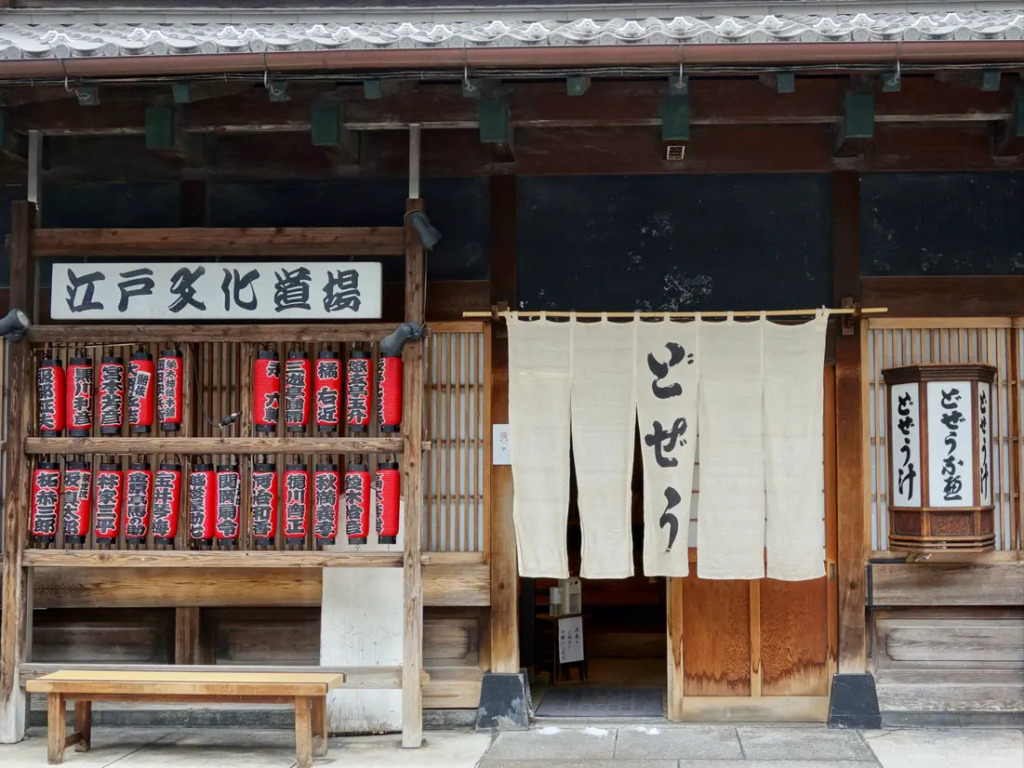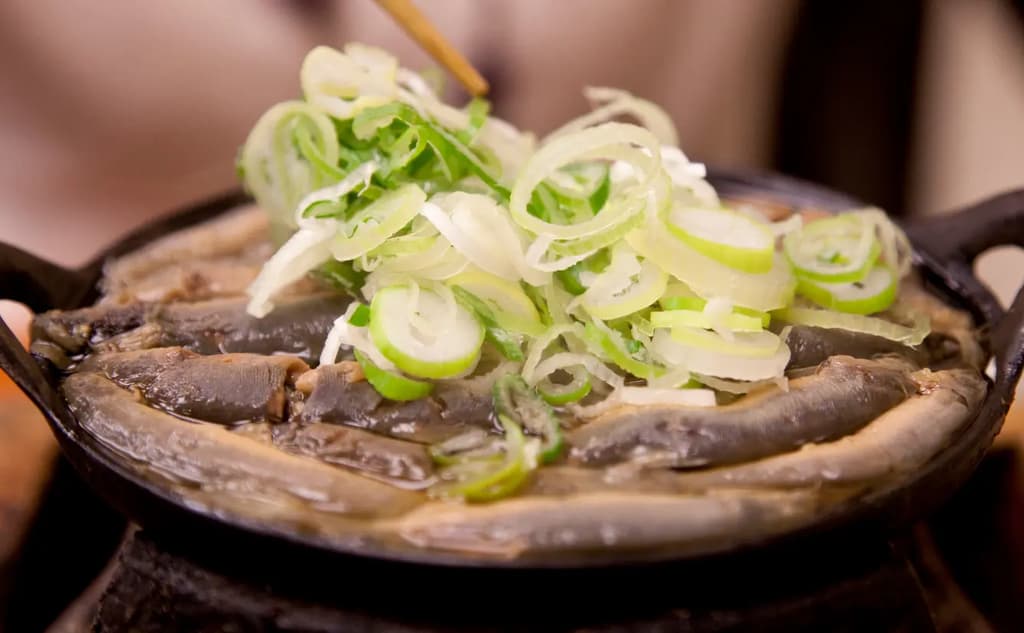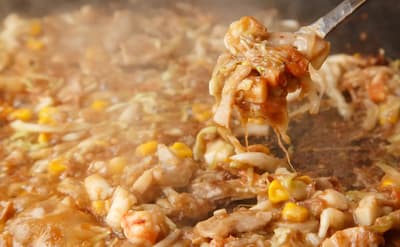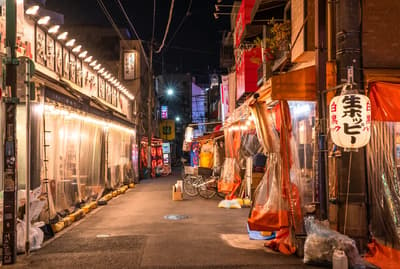Since the Edo period (1603-1868), dozeu nabe has been loved by the common people. With its rich flavor, reasonable price, and abundant nutrition, dozeu nabe has many charms. Here we introduce the characteristics and types of dozeu nabe, actual restaurants, and recommended restaurants.
What is Dozeu Nabe (どぜう鍋)?
Dozeu (dojo) nabe is a local dish of Tokyo that originated in the Edo period (1603-1867). At first glance, the dish looks so impressive that one might not think it is a one-pot dish, with the dojos crowded into the pot and a heaping pile of green onions on top of them.
Dojo has an image of having a strong odor, but in the case of dozeu-nabe, the large amount of green onions and the thick broth removes the original odor of the loach, allowing the dish to be tasted without the muddy smell. Dozeu-nabe can be eaten as is without seasonings, but for a stronger flavor, try sprinkling some sansho (Japanese pepper) or ichimi (chilli pepper) on top if you like.
Unagi (eel) is also well-known as a summer staple, but in fact, dojo has long been one of the most popular summer foods. Because of its lower price compared to eel, dozeu nabe has been popular as a reasonably priced dish that brings out the summer spirit.
In addition, since Dojo is rich in minerals, calcium, vitamins, and other nutrients, it is said to be effective in combating summer fatigue. Therefore, if you are feeling unwell or a little tired, we recommend trying doze-nabe to get your body in good shape.
Three Types of Dozeu Nabe
There are three types of doze-nabe, each with a different cooking method. Some types are not offered at some restaurants, so if you are interested, check the restaurant’s menu in advance.
Maru-Nabe (丸鍋)
The “maru” in marunabe means “whole” and refers to the fact that the whole loach is thrown into the pot. Although there are minor differences between restaurants, marunabe is characterized by putting live dojos directly into the pot and simmering them until the bones are tender. It is the most standard way of cooking dozeu nabe, so if you are new, it is a good idea to order marunabe first.
Nuki Nabe (ぬき鍋)
Nuki nabe, also called “hone-nuki nabe,” is characterized by the fact that, unlike Maru nabe, the bones of the loach are removed in advance. In the nabe, burdock root is stewed together with the loach. The head of the loach is cut off and the backbone is opened in advance, making the dish less visually striking than marunabe, so even small children can enjoy it safely.
Yanagawa Nabe (柳川鍋)
Yanagawa nabe is a dish in which dojo and burdock are simmered in a pot and finally tossed with an egg. The fluffy egg mixture makes the flavor of dozeu-nabe more mellow. If you are concerned about the fishy smell of dojo, or if you have already tried maru nabe or nuki nabe, why not order the gently flavored Yanagawa nabe?
Let’s Go Try Hiroshima Oysters!
The restaurant we visited this time was “Komakata Dozeu Honten (main store)”.
Located about a 5-minute walk from Asakusa Station, this long-established restaurant was established in 1801 and attracts many people for its typical “dozeu nabe”. The restaurant offers traditional-style tatami rooms and table seating. The restaurant’s most popular menu item is “Maru nabe,” which is made by simmering whole loach in a simple soy sauce and miso seasoning, but “Yanagawa nabe” is also available.





Review
This time, we ordered the restaurant’s most popular dish, the dozeu-nabe of maru nabe type. The round, flat pot was covered with dojo, which made a nice sizzling sound as it appeared on the table. Plenty of green onions and other condiments of your choice are added before serving. The sweet sauce was well soaked into the meat, which was very tender and tender. It is recommended for children as well, as there is no smell and the bones are not bothersome. We hope you will enjoy dozeu nabe, a specialty of old town Tokyo.
Click here to see a video of trying Dozeu nabe.
4 restaurants where you can eat Dozeu nabe
Dozeu Iidaya (どぜう飯田屋)
Official website: https://dozeu-iidaya.com/
Kikyouya (桔梗屋)
Official website: https://www.dozeu-kikyouya.com/
Dozeu Hirai (どぜうひら井)
Official website: http://meiten-sumida.com/hirai.html
Dozeu Daimon (どぜう大門)
Official website: https://dozeu-daimon.en.m17n.net/
Editor’s Comment

Dozeu nabe is a dish best suited for summer, but it is also good to try it in the cold winter months. The nutrients of the doze, the rich broth, and the spicy sansho (Japanese pepper) are sure to heal your tired body. There are three types of dozeu nabe, so you may want to try each one.



